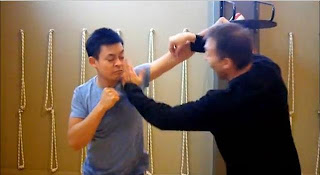Practising locks safely

I've had it suggested to me that in order to practise locks safely, it might be necessary to vary them slightly. A specific example given to me was that which I have previously covered in relation to the ikkyo projection , namely that application of pressure on the tricep rather than the elbow. It was argued that while this is not effective in unbalancing and holding an opponent, it might nonetheless be a viable training method because it precludes injury – injury that is all too easily inflicted on the elbow joint. I hold to the view that there is no merit in this position. In fact, I would go further and argue that it is positively dangerous to apply this or any other lock incorrectly "for safety". Why? First things first: I don't believe it is ever a good idea to train to "miss". I've previously covered this issue in relation to punching/striking/kicking , but the same applies to locking and holding. If you train to "miss" your l...

